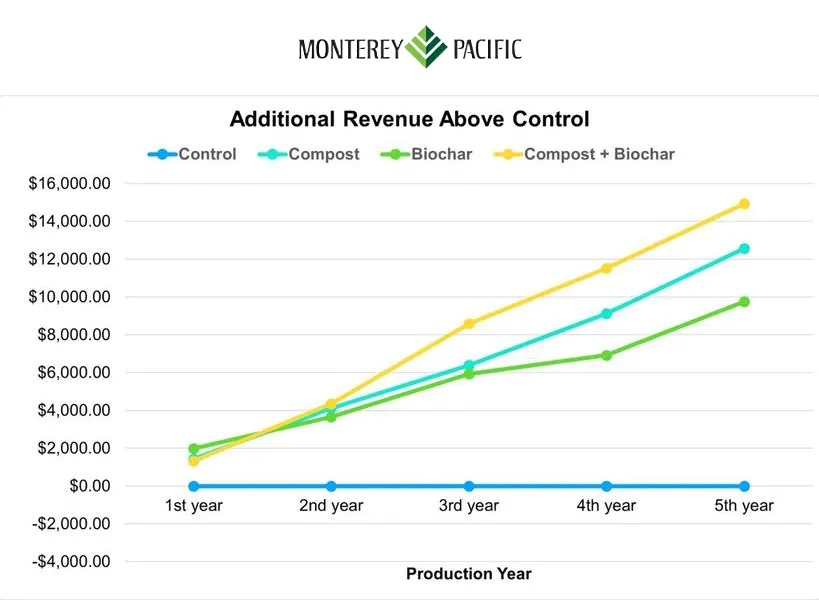Case Study: Monterey Pacific Oasis Vineyard
Dec, 2024
Posted at 18:17h
in Biochar for Agribusiness: Research and Case Studies
35% improvement with compost + biochar
Multi-year field trial comparing amendments of biochar only, compost only, and biochar + compost to a control (no amendment) to a newly established vineyard.
Results:
Highest Yield
Harvest yields were increased by an average of more than 35% where biochar and compost were applied together.
Harvest Yields by Season
In lowest-yielding harvest years, compost + biochar treatments showed greater than 70% yield in the third harvest.
Short ROI
ROI for adding biochar paid off in the first grape harvest with higher profit expected over the life of the vines.


